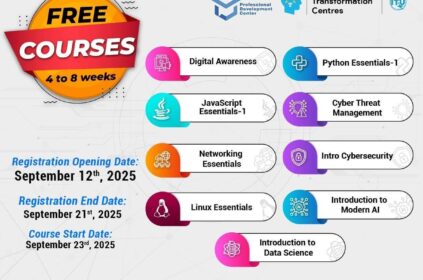Pakistan is on the frontline of climate change, grappling with increasingly frequent and severe environmental crises such as cloudbursts, floods, wildfires, and heatwaves. The devastating 2022 floods, which submerged one-third of the country, killed over 1,700 people, and affected 16 million children, underscore the urgency of innovative solutions. Recent cloudbursts in regions like Khyber Pakhtunkhwa and Balochistan have further highlighted vulnerabilities, with flash floods destroying infrastructure and displacing communities. Artificial Intelligence (AI) offers transformative potential to enhance disaster prediction, response, and recovery, but its implementation in Pakistan faces significant hurdles. This critical report evaluates how AI-driven solutions can address Pakistan’s environmental crises, while addressing challenges like data scarcity, infrastructure limitations, and ethical concerns.
The Environmental Crises Facing Pakistan
Pakistan’s environmental challenges are multifaceted, driven by climate change, geographic vulnerabilities, and socioeconomic factors. Key issues include:
- Cloudbursts and Flash Floods: Sudden, intense rainfall events, like the 2024 cloudbursts in northern Pakistan, trigger flash floods, devastating rural and urban areas.
- Monsoon Flooding: The 2022 floods, exacerbated by melting glaciers and extreme monsoon rainfall, caused $30 billion in damages and displaced millions.
- Wildfires: Rising temperatures and prolonged droughts have increased wildfire risks in regions like Margalla Hills.
- Heatwaves: Urban heat islands in cities like Karachi and Lahore intensify health risks and strain energy systems.
- Water Scarcity: Over 80% of Pakistan’s agriculture depends on irrigation, yet water shortages threaten food security.
These crises disproportionately impact vulnerable populations, including rural farmers and low-income urban communities. Traditional disaster management approaches, reliant on manual assessments and reactive measures, are inadequate. AI-driven solutions can revolutionize Pakistan’s resilience, but their success depends on addressing local challenges.
AI Applications for Pakistan’s Environmental Crises
AI’s ability to process vast datasets, identify patterns, and predict outcomes makes it a powerful tool for disaster management. Below, we explore how AI can address Pakistan’s environmental crises across three phases: prediction, response, and recovery.
1. Prediction and Early Warning Systems
AI can enhance early warning systems (EWSs) by analyzing meteorological, geospatial, and socioeconomic data to forecast disasters. Key applications include:
- Flood Forecasting: Google’s AI-powered Flood Hub, which predicts floods up to seven days in advance, covers Pakistan among 80 countries. By integrating satellite imagery, weather data, and machine learning, it provides real-time alerts to vulnerable communities. Expanding this to include flash flood predictions for cloudbursts could save lives in remote areas.
- Wildfire Detection: AI models using satellite imagery and IoT sensors can detect wildfire risks by monitoring temperature, humidity, and vegetation dryness. For instance, Google Earth AI’s AlphaEarth model maps ecosystems to identify high-risk areas.
- Earthquake Prediction: While not yet operational, machine learning models like SeismicAI’s sensor networks could predict seismic activity, relevant for Pakistan’s earthquake-prone regions like Balochistan.
Critical Insight: Pakistan’s sparse weather sensor network and limited satellite coverage in rural areas hinder AI accuracy. Investments in IoT infrastructure and open-source data are essential to improve predictive models.
2. Disaster Response and Management
During disasters, AI can streamline response efforts by prioritizing resources and aiding coordination:
- Damage Assessment: AI-powered tools like xView2, used in Turkey’s 2023 earthquake response, analyze satellite imagery to map damage in near real-time, enabling rapid rescue operations. Similar tools could assess flood or cloudburst damage in Pakistan’s remote regions.
- Resource Allocation: Machine learning can optimize the distribution of food, medical supplies, and shelter. For example, Google’s AI models prioritized cash grants post-Hurricane Milton by identifying the worst-affected areas.
- Communication Systems: AI-driven platforms can enhance emergency communications by disseminating alerts via mobile apps like MyAnga, which helps Kenyan pastoralists manage droughts. A similar app for Pakistan could deliver flood warnings to rural farmers.
Critical Insight: Pakistan’s limited internet connectivity and low digital literacy among rural populations pose barriers to AI-driven communication. Localized, low-tech solutions, such as SMS-based alerts, are necessary to bridge this gap.
3. Recovery and Resilience Building
Post-disaster, AI can support recovery and long-term resilience:
- Ecosystem Restoration: Google’s Tree Canopy tool uses AI to identify areas for tree planting, reducing urban heat islands and flood risks. Expanding this to Pakistani cities like Lahore could mitigate heatwaves and runoff.
- Agricultural Recovery: AI platforms like Microsoft’s AI for Good Lab optimize crop yields and water use, critical for Pakistan’s agriculture-dependent economy facing water scarcity.
- Impact Evaluation: Earth Observation (EO) data, combined with AI, can assess the effectiveness of interventions by comparing pre- and post-disaster conditions, aiding policy decisions.
Critical Insight: Recovery efforts require long-term funding and community engagement, which are often disrupted by political instability in Pakistan. AI solutions must integrate with local governance structures to ensure sustainability.
Case Studies: AI in Action for Disaster Management
Google’s Flood Hub in Pakistan
During the 2022 floods, Google’s Flood Hub provided forecasts to Pakistan’s emergency agencies, enabling evacuation alerts in affected regions. By analyzing river flow, rainfall, and terrain data, the platform helped minimize impacts. Expanding its coverage to include cloudburst-prone areas could enhance its effectiveness.
Japan’s Earthquake Early Warning System
Japan’s AI-based earthquake warning system uses seismometer data to issue real-time alerts. Pakistan could adapt this model by deploying AI-enhanced sensor networks in high-risk zones, though funding and maintenance remain challenges.
Morocco’s Post-Earthquake Hackathon
Following the 2023 Morocco earthquake, a hackathon leveraged AI to improve disaster response through real-time data analysis. Pakistan could organize similar initiatives to foster local AI innovation, but this requires interdisciplinary collaboration and open data access.
Challenges to AI Implementation in Pakistan
While AI holds immense potential, its adoption in Pakistan faces significant barriers:
- Data Scarcity: Sparse weather sensors and limited satellite coverage in rural areas reduce AI model accuracy, particularly for remote regions prone to cloudbursts.
- Infrastructure Limitations: Unreliable electricity, limited cloud computing, and poor internet connectivity hinder AI deployment in developing countries like Pakistan.
- Digital Literacy: Low tech adoption among farmers and rural communities limits the reach of AI-driven tools like mobile apps or dashboards.
- Ethical Concerns: AI models can perpetuate biases if trained on skewed data, potentially neglecting marginalized communities. Transparent, explainable AI (XAI) is critical to build trust.
- Political and Governance Barriers: Political instability and misaligned priorities often divert resources from vulnerable areas, complicating AI integration into policy frameworks.
Critical Insight: Without addressing these challenges, AI risks becoming an elite tool inaccessible to Pakistan’s most vulnerable populations. Inclusive policies and localized solutions are essential.
Recommendations for Effective AI Deployment
To maximize AI’s impact on Pakistan’s environmental crises, the following steps are critical:
- Invest in Data Infrastructure: Deploy IoT sensors and expand satellite coverage to improve data quality for AI models. Public-private partnerships can fund these initiatives.
- Develop Localized Solutions: Create low-tech AI tools, such as SMS-based alerts, to reach rural communities with limited internet access.
- Foster Interdisciplinary Collaboration: Organize hackathons and research initiatives involving data scientists, agronomists, and policymakers to tailor AI solutions to Pakistan’s needs.
- Promote Ethical AI: Adopt explainable AI (XAI) to ensure transparency and address biases, building trust among users.
- Strengthen Policy Frameworks: Institutionalize AI-driven decision-making in disaster management policies, ensuring alignment with national climate goals.
- Enhance Public Awareness: Launch training programs to improve digital literacy among farmers and local officials, encouraging AI adoption.
The Path Forward: Building a Resilient Future
Pakistan’s environmental crises, from cloudbursts to floods, demand urgent, innovative solutions. AI-driven solutions offer a path to enhance prediction, response, and recovery, but their success hinges on overcoming data, infrastructure, and governance challenges. By investing in localized, ethical, and inclusive AI applications, Pakistan can not only address its immediate crises but also emerge as a leader in climate resilience. Collaborative efforts between government, private sector, and international organizations will be key to scaling these solutions.















